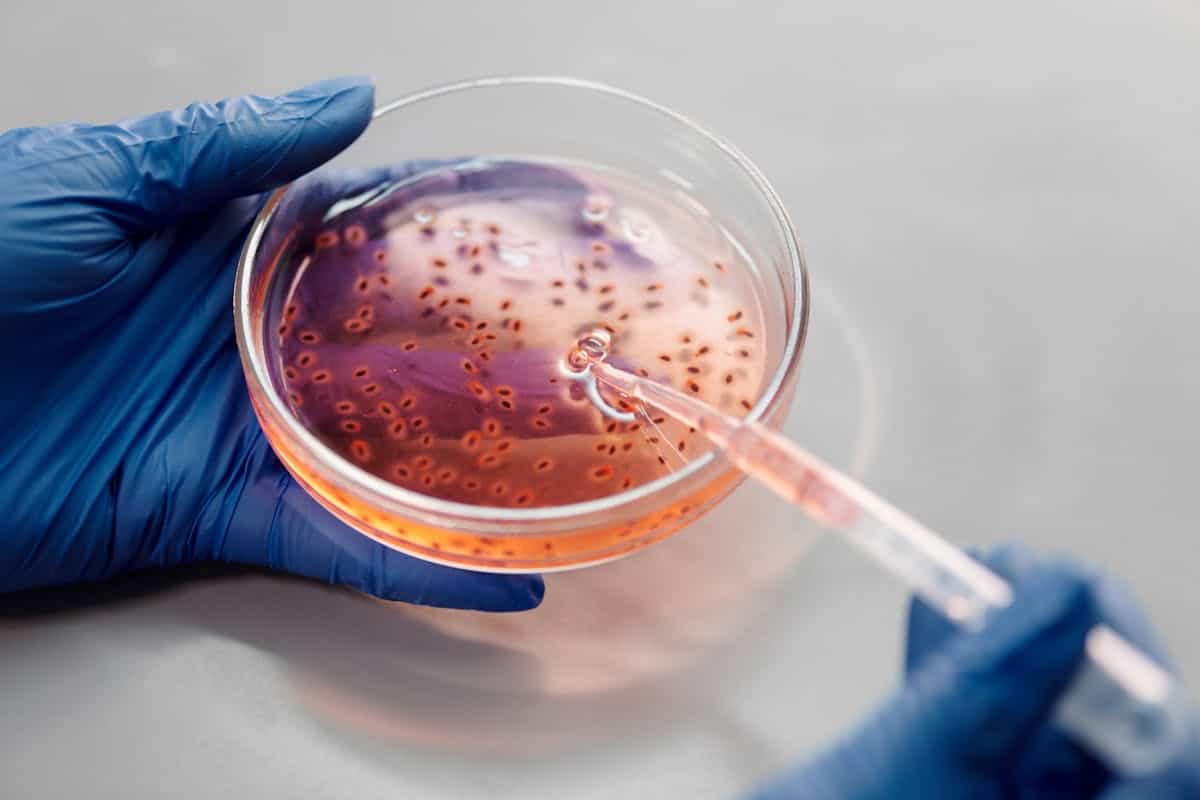In this article, we will describe the properties of oregano oil and its 8 main health benefits.
Additionally, we will analyze the side effects that can occur from overuse of this plant extract and the possible ways to take oregano oil.
What is oregano oil?
Oregano oil is obtained from the oregano plant, specifically from the plant’s dried leaves and flowers, through a process of steam distillation. Thanks to this, the active components of oregano are concentrated, providing its characteristic medicinal properties.
The species most known for their culinary use are Origanum vulgare, native to Europe, and Lippia graveolens, a plant native to Mexico.
Although there are more than 40 species, the plant native to the Mediterranean regions is usually used, as it has more therapeutic properties.
8 benefits of oregano oil
Oregano oil provides a wide variety of health benefits, all derived from its medicinal properties. Below we will describe 8 of them: antiviral activity, antifungal, antimicrobial, relief of inflammation and pain, antioxidant activity, preservative in the food industry, mood improvement, and delay of skin aging.
Antiviral
Natural oregano oil has properties that help strengthen the immune system to relieve symptoms of respiratory infections.
Its volatile compounds improve irritated respiratory tracts and also control excessive mucus production. In fact, by inhalation or internally, it serves to relieve symptoms of respiratory conditions such as congestion, respiratory tract infections, and colds (13).
In fact, Meneses et al. 2009, investigated the extracts of this plant using the yellow fever virus, finding its efficacy in inhibiting five DNA viruses (HHV-1, ACVR-HHV-1, BoHV-1, BoHV-2, BoHV-5) and three RNA viruses (HRSV, RV, BVDV).
On the contrary, another study conducted by García-Pérez et al. (2012), did not find antiviral efficiency on the reproduction of the influenza A/Aichi/2/68 (H3N2) virus in MDCK cells.
Relieves inflammation and pain
Some inflammatory diseases such as arthritis or carpal tunnel syndrome can be alleviated thanks to the active compounds of oregano oil (14).
These anti-inflammatory compounds relieve the sore area, restoring blood circulation and reducing muscle stiffness.
Delays skin aging
The main active compounds of this oil, which are thymol and carvacrol, help protect our cells from premature aging.
Additionally, the oil extract contains 2 major antioxidants: vitamins C and E, which also combat the formation of free radicals, slowing the oxidative process that accelerates natural aging (1).
Preservative in the food industry
The main reason why oregano oil is used as a preservative in the food industry is due to its antibacterial and antifungal properties, especially one of its active compounds, thymol (10,11,12).
Antioxidant
The antioxidant function of various compounds in foods has attracted much attention regarding their role in the diet in disease prevention (6).
Some of the compounds responsible for the antioxidant activity of oregano oil are (6):
- tocopherols
- carotenoids
- ascorbic acid
- phenolic compounds
The antioxidant activity of the oregano plant derives from the hydroxyl groups present in phenolic compounds (7).
In all the varieties of this plant that have been analyzed, high levels of antioxidants have been found, exceeding 140 mmol/100 g (8).
What is its antioxidant potential due to?
[article ids=”51208″] It is important to highlight that the great antioxidant activity of oregano extracts is related to their ability to prevent the development of lipid peroxidation, protecting DNA from damage by hydroxyl free radicals. In fact, the oil extract derived from the species O. vulgare has anti-radical capacity thanks to the compounds of carvacrol and thymol (9).
Antimicrobial and antifungal activity
Elgayyar, M. et al. (2001) and Aligiannis, N. et al. (2001) discovered that oregano oil from the genus Origanum showed antimicrobial activity against gram-negative bacteria: Salmonella typhimurium, Escherichia coli, Klebsiella pneumoniae, Yersinia enterocolitica, and Enterobacter cloacae. Additionally, positive results were obtained against the inhibition of gram-positive bacteria such as Staphylococcus aureus, Staphylococcus epidermidis, Listeria monocytogenes, and Bacillus subtilis (10, 11).
On the other hand, in 1996, the journal J. Agric. Food Chem. published an article on the antifungal capacity of this essential oil, which mentioned the inhibition against fungi such as Candida albicans, C. tropicalis, Torulopsis glabrata, Aspergillus niger, Geotrichum, and Rhodotorula; but not against Pseudomonas aeruginosa (12).
The compounds responsible for most of the antimicrobial activity of oregano oil are the phenols carvacrol and thymol, especially due to their ability to inhibit gram-negative microorganisms, except for P. aeruginosa, where thymol has greater activity (10,11,12).
Improves mood
Thymol and carvacrol act on the nervous system and emotional health, improving mood in cases of stress and depression (11).
Active components
In the chemical composition of oregano, carvacrol and thymol stand out, which are recognized as its active compounds, responsible for the medicinal properties of oregano oil.
Below are the components mostly found in O. vulgare and L. graveolens.
|
Scientific name |
Main components |
References |
|---|---|---|
| O. vulgare | o-coumaric acid, ferulic acid, caffeic acid, r-hydroxybenzoic acid, vanillic acid, rosmarinic acid. Myrcene, a-terpinene, r-cymene, g-terpinene, thymol, carvacrol, b-caryophyllene | 1,2,3 |
| L. graveolens | caryoptosidic acid, naringenin, pinocembrin, b-felandrene, carvacrol, 1,8-cineole, r-cymene, methyl thymol, thymol | 4,5 |
Other active components of oregano oil that we can mention are (13):
- P-cymene: contributes to the anti-inflammatory and antifungal properties of the oil.
- Terpinene: antioxidant properties and antifungal activities
- Linalool: A monoterpene alcohol with anti-inflammatory and sedative properties, helping to reduce stress and anxiety.
- Beta-caryophyllene: A sesquiterpene with anti-inflammatory properties
How to take oregano oil?
Oregano oil can be taken in different ways depending on the use we give it (15):
1. Always dilute
Oregano oil should always be diluted before use, whether for topical application or internal consumption. For internal use, you can dilute a few drops of oregano oil in a glass of water or mix it with a carrier oil like olive or coconut oil before ingesting it.
2. Internal use
- Dosage: small doses are usually recommended, such as 1-2 drops, three times a day, and observe how your body reacts.
- With food: take with meals or liquids to minimize gastrointestinal irritation
3. External use
- Topical application: in case of skin diseases such as fungal infections or acne, oregano oil is diluted with a carrier oil (such as jojoba, almond, or olive oil) in a ratio of 1 part oregano oil to 3 parts carrier oil and applied directly to the affected area.
- Inhalations: in cases of respiratory diseases, add a few drops of oregano oil to a bowl of hot water and inhale the steam to help clear the airways.
4. In capsules
It is also available in capsules, which usually cause fewer gastrointestinal problems.
Side effects
When using oregano oil extract in different ways and for different uses, we must consider some possible side effects.
As always indicated when starting the use of a personal or pharmaceutical product: “pregnant or breastfeeding women, with previous health problems, it is very important to consult a doctor before starting to use this plant.”
The most common side effects that have been diagnosed are related to topical use on the skin, as it can cause irritations and allergic reactions, or in case of oral ingestion, it can cause gastrointestinal irritation.
What influence does oregano oil have on animal production?
Essential oils of oregano from the vulgare and Lippia subspecies are used as additives in the feeding of domestic animals due to the following benefits proven by scientific evidence (16):
- Improve the functionality of the digestive system in monogastrics
- Reduce enteric methane emissions in ruminants
- Reduce bad odors in pig feces.
Buy essential oregano oil
Below are some links to purchase oregano oil quickly and easily, with a fairly recommendable quality-price ratio.
Está indicado para uso interno, aromaterapia, cuidado personal y Bienestar.
Conclusions
As we have seen throughout this article, oregano oil is used in a very diverse way due to its great medicinal properties, mainly due to its content of carvacrol and thymol, the main active compounds of this plant.
Among its benefits are its antioxidant, anti-inflammatory activity, its power to inhibit gram-negative and some gram-positive bacteria, its antiviral effect, pain and inflammation relief, delay of aging, and its use as a preservative in the food industry.
However, due to the widespread use of oregano extract as a product to relieve skin diseases, it could cause allergic reactions and/or irritations, and in the case of oral ingestion, gastrointestinal problems. Therefore, it is recommended to consult with your doctor before taking this product.
It is important the influence that oregano oil has had in scientific evidence for animal production, as it has allowed improving digestibility in monogastrics, reducing methane emissions produced by ruminants, and bad odors in pig farming.
Bibliographic references
- Russo, M et al. (1998) Essential oil chemical composition of wild populations of Italian oregano spice (Origanum vulgare ssp. hirtum (Link) Ietswaart): A preliminary evaluation of their use in chemotaxonomy by cluster analysis. 1. Inflorescences. J. Agric. Food Chem; 46: 3741-3746.
- Kokkini, S. et al. (1997). Autumn essential oils of Greek oregano. Phytochem. 1997; 44 (5): 883-886.
- Milos, M. et al. (2000). Chemical composition and antioxidant effect of glycosidically bound volatile compounds from oregano (Origanum vulgare L. ssp. hirtum). Food Chem; 71: 79-83.
- Pascual, ME. et al. (2001). Lippia: traditional uses, chemistry and pharmacology: A review. J. Ethnopharmacol; 76: 201-214.
- Rastrelli, L. et al. (1998). Iridoids from Lippia gaveolens. Phytochem. 1998; 49 (6): 1829-1832.
- Kahkoren, MP. et al. (1999). Antioxidant activity of plant extracts containing phenolic compounds. J. Agric. Food Chem; 47: 3954-3962.
- Shahidi, F; Janitha, PK. & Wanasundara, PD. (1992). Phenolic Antioxidants. Crit. Rev. Food Sci. Nutr; 32: 67-103.
- Dragland, S. et al. (2003). Several culinary and medicinal herbs are important sources of dietary antioxidants. Am Soc Nutr Sci; 133(5): 1286-1290.
- Deighton, N. et al. (1993). Identification by EPR spectroscopy of Carvacrol and Thymol as the major sources of free radicals in the oxidation of plant essential oils. J. Sci. Food Agric; 63: 221-225.
- Elgayyar, M. et al. (2001) Antimicrobial activity of essential oils from plants against selected pathogenic and saprophytic microorganisms. J. Food Protect, 64 (7): 1019-1024.
- Aligiannis, N. et al. (2001). Composition and antimicrobial activity of the essential oils of two Origanum species. J. Agric. Food Chem; 49: 4168-4170.
- Sivropoulou A. et al. (1996). Antimicrobial and cytotoxic activities of Origanum essential oils. J. Agric. Food Chem; 44: 1202-1205.
- Leyva-López, N. et al. Essential Oils of Oregano: Biological Activity beyond Their Antimicrobial Properties.
- García-Pérez, E. et al. (2012). Review of the production, phytochemical composition, and nutraceutical properties of Mexican oregano. Revista mexicana de Ciencias Agrícolas, 3 (2): 339-353.
- Colomer, J. (2024, April 30). What Benefits Does Oregano Oil Have and How to Take It? Blog de Fitness, Nutrición, Salud y Deporte | Blog HSN; HSN.
- Review of oregano oil spp. in health and animal production. (2020). Abanico Agroforestal, 2(1). https://doi.org/10.37114/abaagrof/2020.







